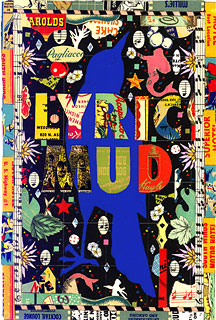This article was written by Stacy Perman and appeared in Business Week October 2006
BusinessWeek.com recently asked a cross-section of experts if entrepreneurs are made or born.
When it comes to being an entrepreneur, is it simply a matter of physiological hard wiring? Or is the entrepreneurial spark something that can be lit? Clearly, qualities such as risk taking and determination, common traits in many entrepreneurs, are part of one’s DNA. However, transforming inspiration into a business concept is one thing, and transforming a concept into an actual business is another. Can the characteristics often associated with entrepreneurs—drive, confidence, insight—be acquired? Can they be learned?
With more and more individuals eschewing the corporate ladder in order to start their own outfits at ever younger ages, BusinessWeek.com recently put the question to a cross-section of entrepreneurs and academics: Are entrepreneurs born or made?
Frank Moss, director of the Media Lab at the Massachusetts Institute of Technology and former CEO of Tivoli Systems as well as co-founder of Stellar Computer and Infinity Pharmaceuticals: I would suggest that the entrepreneurial gene is in everyone’s DNA. Eons before the first big companies emerged about a thousand years ago we were all entrepreneurs: farmers, craftsmen, artisans, storytellers, bloodletters, etc.
I believe that we are all born with the ability to be an entrepreneur, but we have to unlearn the risk-averse behavior that became part of our culture in the developed world over the past 500 years. As information and communication technologies tear down these barriers, we will see a full circle as billions of people will be empowered to express their entrepreneurial genes.
Mark Veeder, co-founder and creative director of Event Quest in New York City and co-owner and co-creator of the River Market in Barryville, N.Y.: I think entrepreneurs are definitely born. Even though “the making of an entrepreneur” is a huge business in this country with Tony Robbins and the rest, I think those programs try to systematize the mind of the entrepreneur, which is impossible. My feeling is that entrepreneurs are a rare mix, the perfect storm of creativity, talent, confidence, personality, drive, intuition, and energy.
They possess a high EQ [emotional quotient], and their IQ is not as important—it’s a lifestyle, it’s embedded like an instinct, not something you can turn on and off. At times it is a blessing and a curse. While many people are dreamers, a true entrepreneur’s dreams are converted into realities because true entrepreneurs are always creating, always thinking of ideas, mentally evaluating endless possibilities and are excited by the new and the next.
Steve Hindy, co-founder of the Brooklyn Brewery and co-author of Beer School: Bottling Success at the Brooklyn Brewery: I think everyone is born with an entrepreneurial spark, a drive to create something, a product or a service that will fulfill them, pay the bills, and afford some leisure. Some of us fan that spark into a flame and forge a business. It is deeply satisfying to create a business and see it become part of the world around you. By celebrating entrepreneurship, by recounting the hard knocks tales of entrepreneurs, and by studying their triumphs and screw-ups, business schools absolutely can nurture more entrepreneurs.
Trish Karter, president and founder of Dancing Deer Bakery in Boston: I can’t answer the nature/nurture question. But if a person’s background and intuition don’t make her/him comfortable with risk, resilient in the face of ridiculously challenging circumstances, unreasonably optimistic about the future, and instinctively inclined to put two feet on the ground happilyevery morning, they aren’t likely to be counted in the successful entrepreneur column.
I don’t think an entrepreneur must necessarily be an innovative thinker, but successful ones often have those interesting brains that see the world differently, which is perhaps where the gene pool comes in.
Neal Thornberry, faculty director of the Babson Executive Education at Babson College and author of Lead Like an Entrepreneur: The actual answer is yes and no. We know we can teach people elements of the entrepreneurial mindset and skill set, but one thing needs inducement and the other involves self perception. We can clearly teach people to identify new business opportunities, and we can teach them how to differentiate a good idea from a good opportunity.
In fact much of what we do at Babson is to teach students how to think and act like entrepreneurs. So we teach students how to finance their ideas, how to assess market demand, how to scale the business, mitigate risk, etc. But the passion that entrepreneurs must have to take their ideas all the way through to creating a viable new business enterprise is not so teachable. And the passion we are talking about is for their idea.
They need either to be in love with it or learn to love it if they are going to have the perseverance to see it through. I have had many people who had not shown any entrepreneurial orientation who got switched on by learning about entrepreneurship.
The other, less teachable part of entrepreneurship is the belief that the person has the ability to turn their idea into a business. We often find people with a good opportunity, but they don’t have enough confidence in themselves. Education can help here as well, but equally important is surrounding the would-be entrepreneur with others who share his/her excitement for the idea.
************



























